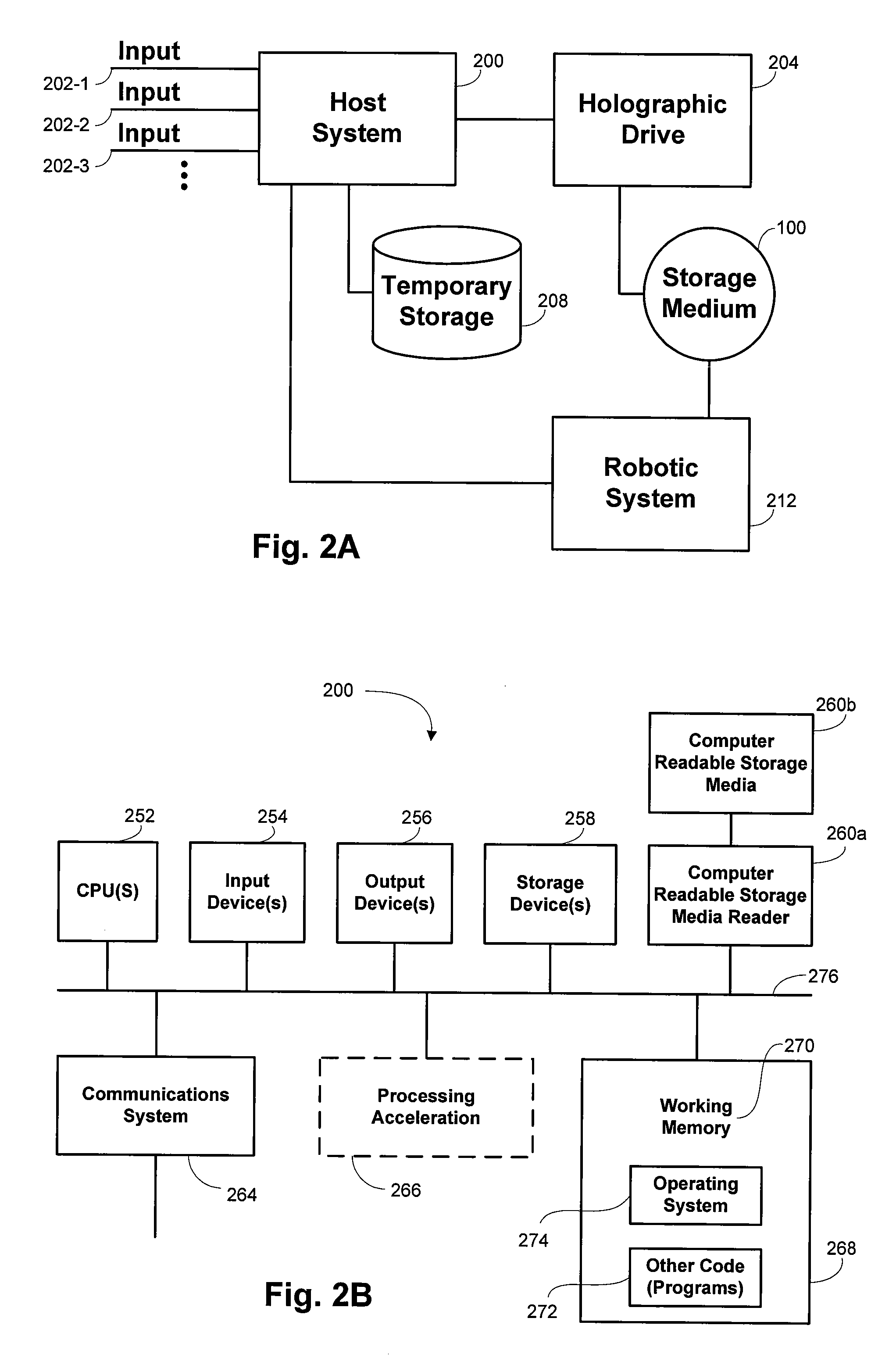Storage capacity optimization in holographic storage media
- Summary
- Abstract
- Description
- Claims
- Application Information
AI Technical Summary
Benefits of technology
Problems solved by technology
Method used
Image
Examples
Embodiment Construction
[0014]One type of storage medium that has been attracting increasing attention because of its large storage capacity uses holographic storage as a specific form of optical data storage. Briefly, a typical technique for storing data holographically uses two coherent light beams and directs them onto a storage medium; in some instances the two beams may originate as a single laser beam that is split by a partially reflective mirror or other optical beamsplitter. One of the coherent beams is a signal beam that is used to encode the data on the storage medium while the other coherent beam is a reference beam. An interference pattern is produced within the storage medium where the beams intersect and stored on the storage medium. The data may subsequently be retrieved by illuminating the storage medium with a beam substantially identical to the reference beam, with the stored interference pattern causing light to be diffracted and reproduce the data beam.
[0015]There are two broad classes...
PUM
 Login to View More
Login to View More Abstract
Description
Claims
Application Information
 Login to View More
Login to View More - R&D
- Intellectual Property
- Life Sciences
- Materials
- Tech Scout
- Unparalleled Data Quality
- Higher Quality Content
- 60% Fewer Hallucinations
Browse by: Latest US Patents, China's latest patents, Technical Efficacy Thesaurus, Application Domain, Technology Topic, Popular Technical Reports.
© 2025 PatSnap. All rights reserved.Legal|Privacy policy|Modern Slavery Act Transparency Statement|Sitemap|About US| Contact US: help@patsnap.com



